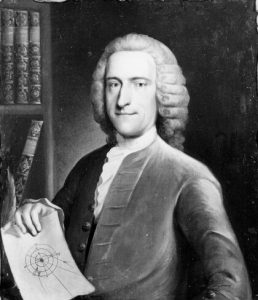Dante wrote in his Divine Comedy that, as soon as they enter Hell, in the first of its circles, there are those who, having merits to have been saved, were not enough because they were not baptised. Among them are poets, philosophers and thinkers: Homer, Aristotle, Plato, Seneca and Averroes. And also distinguished mathematicians such as the geometrician Euclid and the astronomer Ptolemy. As can be seen, although Hell has a bad reputation – I am not saying that it is bad, but that it has a bad reputation -, the company is certainly good. Which is a comfort to those of us who are doomed to go there because we agree with the saying, “There probably is no God. Stop worrying and enjoy life”.
If you want more comforting, bear in mind that in the second circle of the Inferno are – still according to Dante – the lustful. There we find Dido, Achilles, Cleopatra, Paris and Helen, or Francesca of Rimini and Paolo Malatesta (reproduced in Ary Scheffer’s painting), who do not seem bad company either.
The three places, Hell, Purgatory and Paradise, that make up the landscape of the Divine Comedy were recreated as an allegory of the structure of the universe prevailing at the beginning of the 14th century. That structure was imagined by Aristotle and other Greek scholars, modified slightly by the astronomers of Islam, and finally Christianised by the Scholastics. All of which Dante himself explained in a prose work, entitled Convivio (Banquet), where he revealed part of the symbology hidden in the Divine Comedy. Thus, by symmetry with the nine celestial spheres, the nine circles of Hell penetrated towards the interior of the Earth, progressively increasing the degeneration, sins and wickedness of those condemned there, until they reached the abode of the devil and his acolytes located precisely in the very centre of the Earth. It was the farthest one could be from the Empyrean, that is, from the throne where God sits while the righteous enjoy looking at Him, which the scholastics placed just above the ninth celestial sphere.
With the scientific revolution initiated by Copernicus and finished off by Newton, the Earth left its stillness at the centre of the universe and became just another planet revolving somewhat stupidly around the Sun, while the ninth sphere disappeared, the stars scattering into the unfathomable sidereal abysses that Newton’s absolute space made available to them. As a consequence, both the Empyrean and Hell were left without the privileged places that the old Aristotelian-Scholastic cosmology had assigned to them.
Newton’s assertions about God’s periodic intervention to guarantee the stability of both the solar system and the universe promoted in England what later came to be called “astrotheology”, which, among other things, sought to locate in the new universe the location of both God’s throne and Hell.
By far the most imaginative proposal for the location of Hell came from Newton’s close associate, William Whiston (photo). When Newton joined the English Treasury, William Whiston stood in for him for a few years in the Lucasian chair at Cambridge, until he became full professor in 1703 when Newton resigned. While he was replacing him, Newton paid him 20 pounds out of the 120 pounds he received; not that Newton was short of money: the year he gave up the chair to Whiston, Newton earned 3,500 pounds as Director of the English Treasury. As it happens, William Whiston was finally expelled from the Lucasian chair in 1710 for his self-confessed Arianism: an Arianism that Newton probably passed on to him; Newton not only did not lift a finger to prevent his expulsion, but when, in 1716, Whiston was proposed as a Fellow of the Royal Society, he threatened to resign as President if the proposal was approved. In short, the Newtonian way.
According to Whiston, hell could be located on the surface of a comet with an extremely elliptical and extensive orbit: in this way, those of us who have a reserved place there would be guaranteed a double and atrocious suffering: at aphelion, when the comet crosses the inscrutable regions far from the Sun, we would suffer an unbearable cold, while at perihelion we would roast with heat when the comet reaches its closest proximity to the sun.
There is little consolation to be found in the face of this prospect, other than to think of the fantastic parties that poets, mathematicians, philosophers, lustful people, jazz musicians and wine cellar owners from Jerez – I can’t imagine them in heaven – will be able to hold there.


EXTRAORDINARTIO ARTICULO Y NO TANTO , EN MI APRECIACION POR EL CONTENIDO CIENTIFICO, SINO POR EL EXQUISITO Y PROFANO LENGUAJE UTILIZADO…QUE MAS APROPIADO NO PUDO SERGRACIAS
Fe de erratas : Mi nombre es Marcelo… no Maecelo